We hope that each of you, our readers, will enjoy and appreciate this article we present about these 4 Intriguing New Zealand Insects. It was certainly our pleasure to compile the information for you. May it provide you with both education and increased awareness.
These few species listed herein represent only a portion of the natural wonders found throughout the region, though. Yet, it’s our belief that they serve as excellent representations of the wonders found here. Check out some of our other articles for similar marvels.
Australian Painted Lady
Australian Painted Lady Facts
- Leading off this article about these 4 Intriguing New Zealand Insects we present the gorgeous creature known as the Australian Painted Lady.
- This gorgeous Lepidoptera is most frequently referred to by this informative common name due to part of its range. It does have a few other general names, though. Those include such diverse terms as the Cosmopolitan and the Thistle Butterfly.
- Within scientific circles, however, it’s much known better by its formal title. Thankfully, that’s an extremely easy title for the layperson to pronounce. That’s because this marvel of Nature and evolution bears the official moniker of Vanessa kershawi.
- It received that name due to the efforts of the Irish zoologist, Sir Frederick McCoy. The noted professional made the first formal acknowledgement of it as a separate and distinct species. That scientifically noteworthy even occurred in 1868.
- It often serves as a source of confusion and conflict among entomologists. That’s true since it’s extremely similar to a much more widely spread species. Many researchers believe it should be considered as only a subspecies of that better-known insect.
- The beautiful Australian Painted Lady appears to be maintaining a population base that’s both stable and sufficient. That pleasant also seems to hold true throughout the entirety of its range. The IUCN, therefore, presently has no listing for it on the Red List.
- It nevertheless faces several possible threats to its existence. In this, it follows the pattern of most species. The majority of these perils stem from the actions of humans. They include such dangers as habitat loss and the increasing effects of climate change.
Australian Painted Lady Physical Description
The visually stunning Australian Painted Lady is a wonder of Nature that capture one’s interest easily. It does so primarily due to its appearance, though. That’s because, all other marvelous aspects aside, it ranks as an approximately average-sized butterfly species.
Interestingly, it differs from many, though not all, related invertebrates. That’s true since it displays no noticeable degree of the physiological characteristic of sexual dimorphism. This results in it being extremely difficult for non-experts to distinguish the genders.
Individuals of both sexes attain an average wingspan of roughly 2 in (5 cm). This actually makes it slightly smaller than the very similar species sharing the same range that leads to the previously mentioned issue. It’s among the main reasons some consider it separate.
The elongated body of this remarkaable Lepidoptera shows entirely an extremely dark brown, almost black. Uniquely, though, the tips of the antennae display a bright white at the tip. Like many related creatures, that body possesses a covering of fine, soft hairs.
It’s the wings of the Australian Painted Lady that garner the most appreciation, however. The background color consists of a brown shade. This, though, turns to a brick-red shade, crossed by black bands. Its forewings show black, with four white dots and a white bar.
Meanwhile, the hindwings present four round eyespots at the base. These also show a blue center for several. The underwings of the insect, though, display an almost identical pattern. However, the base of the underwings show a brick red color, instead of the brown.
- Kingdom: Animalia
- Phylum: Arthropoda
- Class: Insecta
- Order: Lepidoptera
- Family: Nymphalidae
- Genus: Vanessa
- Species: V. kershawi
Australian Painted Lady Distribution, Habitat, and Ecology
The startling beauty known as the Australian Painted Lady evolved as native to a somewhat limited section of the globe. That immediate likely won’t surprise anyone, given its name. That’s because, as that name implies, it’s mainly native to the continent of Australia.
Yet that’s not the sole location for this winged wonder. Perhaps riding the prevalent westerly winds of the region, it’s also present on several islands in the area. Most prominently, that includes New Zealand. It’s currently unknown if the insect ever appeared anywhere else.
This impressive invertebrate evolved very generalized habitat requirement. Essentially, it appears anywhere in its range with the proper conditions. Primarily, this consists of the presence of large quantities of plants with nectar producing blooms to feed on.
Intriguingly, in heavily populated areas, this often consists of backyard gardens and parks. This occurs due to the fragmentation of their natural feeding grounds by human urbanization. Away from such areas, however, it often frequents sites such as open meadows.
The Australian Painted Lady possesses an ecology very similar to related species. Very often the same plant serves as food for the adult, and host plant for the larvae. Common examples include such plants Banskia, Bottlebrush, Native Finger Lime, as well as Eucalyptus.
Following mating, the females lay their eggs on appropriate foliage, usually in the center of the leaf. These hatch in as little as three days. The caterpillar is only active at night, and spends most of its time feeding. The entire lifecycle of the insect averages 53 days!
Monarch Butterfly
Monarch Butterfly Facts
- Our next choice for inclusion in this collection of 4 Intriguing New Zealand Insects is the classic beauty that goes by the name of the Monarch Butterfly.
- This breathtaking creation of Nature and evolution most frequently goes by the well deserved name we’ve used here. It has other less often used titles, though. These include such terms as common tiger, wanderer, and black-veined brown.
- Inside of scientific communities, however, it’s better known by its official moniker. Fortunately for the layperson, that’s a comparatively simple title, as such things go. That’s because this marvelous Lepidoptera bears the official name of Danaus plexippus.
- The invertebrate received that name due to the efforts of the esteemed Swedish zoologist, Carl Linnaeus. He recorded the first recognition of the creature as a separate and distinct species. The researcher accomplished this feat in the year 1758.
- A total of three species actually bear the same general appellation. The specific one referred to in this article, though, is the best known and most commonly referred to. A total of six acknowledged subspecies of the insect also exist across the globe.
- The gorgeous Monarch Butterfly inhabits a moderately large range. It also engages in impressive seasonal migrations. Sadly, the amazing beauty now finds itself in danger. Accordingly, the IUCN thus lists it as Endangered on its Red List of Threatened Species.
- It now faces many threats to its existence. That’s true in both short and long term. Most of these, though, stem from human activities. Human herbicide use has killed much of its food source. It also now faces the same threat of climate change as we all do.
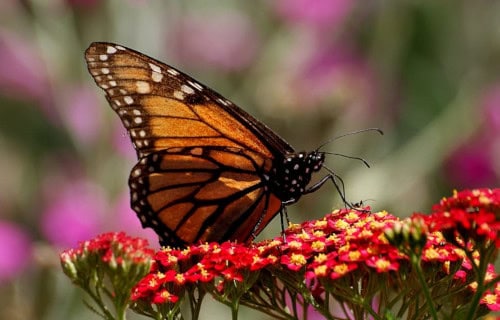
Monarch Butterfly Physical Description
The captivating Monarch Butterfly fully merits appreciation by those who encounter it. Unlike some of its many relatives, though, it does so for several reasons. Its sheer beauty certainly qualifies as one factor. Yet it also boasts some impressive statistics in terms of size.
It does follow one pattern that’s common among its kind, as well. That’s due to the fact that the insect displays a degree of sexual dimorphism. In its case, this physiological trait manifests itself in terms of both size and appearance. As the name implies, its regal.
Physically, males of the species attain a slightly greater wingspan than their female counterparts. But they also display a small difference in terms of appearance. It’s a very minor one, though. On one vein on each hindwing of the males, a tiny black spot displays.
Otherwise, the two genders of the Arthropod present a very similar structure. The wings of both sexes reach an average width of approximately 3.5 – 4 in (8.9 – 10.2 cm). The body, meanwhile, develops as elongated, mostly black, except for a few white spots on the head.
It’s the wings of the aptly-named Monarch Butterfly that garner the most attention, however. The uppersides typically present a tawny orange hue. The many veins of the wings also show black, along with their margins. Two series of small white spots also line those edges.
The forewings additionally show small orange spots near the tips. The undersides displays similar, but not identical patterns. Their hindwings are yellowish brown, with larger white spots. Its forewings also manifest the same yellowish-brown color on their tips.
- Kingdom: Animalia
- Phylum: Arhropoda
- Class: Insecta
- Order: Lepidoptera
- Family: Nymphalidae
- Genus: Danaua
- Species: D. plexippus
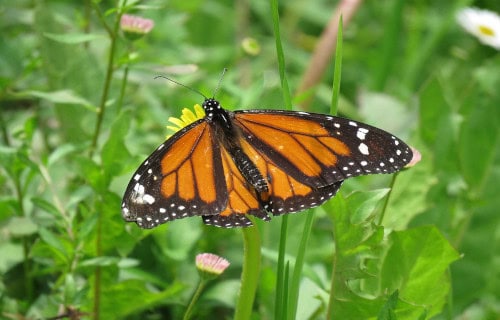
Monarch Butterfly Distribution, Habitat, and Ecology
The stunning Monarch Butterly evolved as native to a relatively broad swathe of the world. The sheer scope of that range might surprise some people, though. That’s true since this insect marvel appears in parts of both the Northern and Southern Hemispheres.
Part of that extends from southern Canada, in North America, to southern South America. It’s also found in Hawaii, Bermuda, the Cook Islands, and other islands in the Caribbean. From there, it also appears from Australia to the Philippines, and as far as Morocco.
This wonder of evolution developed as primarily present in several specific habitat types. Yet it does display some versatility and adaptability. Most individuals, however, make their home in regions consisting of either meadows, grasslands, praries, and along roadsides.
Most further display a strong preference for the presence of other determining factors. These include such things as proximity to smaller streams, and areas of sufficient sunlight. The awesome creature additionally prefers the presence of sufficient roosting plant life.
The magnificent Monarch Butterfly is also famous for its massive migrations. A majority of the population migrates to a singly location in Mexico for the winter. Following this, the female lays her eggs during the return trip. These she places on the underside of leaves.
Those eggs most commonly appear on the foliage of milkweed. Despite their toxicity to most species, the larvae consume them vorcaciously. Adults typically live 2 -5 weeks. During that time, they too consume vast quantities of nectar from a wide variety of flora.
New Zealand Giraffe Weevil
New Zealand Giraffe Weevil Facts
- Next up in this gathering of 4 Intriguing New Zealand Insects comes the unusual work of nature bearing the title of the New Zealand Giraffe Weevil.
- This highly distinctive creation of Nature and evolution typically goes by the informative and descriptive common name because of its native range. For the present moment, the remarkable crature has no other accepted common name.
- Scientific professionals, meanwhile, most frequently refer to this natural marvel by its official technicla name. That, however, represents even more of a mouthful than the common name! That’s because it’s known by science as the Lasiorhynchus barbicornis.
- The amazingly evolved Arthropod received that hard to pronounce name at the hands of the renowned Danish entomologist, Johan Christian Fabricius. He accomplished the first formal acknowledgment of it as a separate and distinct species, in the year 1775.
- Regardless of which term one chooses to emply when speaking of it, though, the insect represents an impressive species. It also represents the largest beetle, in terms of length, native to its particular region of the world. That serves to further distinguish it.
- For the moment, the New Zealand Giraffe Weevil appears to be maintaing a population base that’s both sufficient and stable. The IUCN therefore has no listing for the invertebrate on its Red List. That could potentially change in the near future, however.
- This holds true due to the fact that the animal nevertheless does face several potential threats to its continued existence. In this, it’s like most species. Habitat loss forms a possible danger, of course. Climate change, though, likely forms its greatest threat.
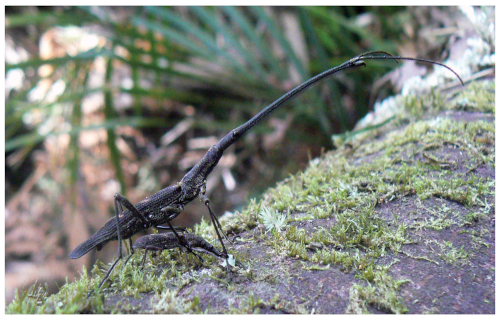
New Zealand Giraffe Weevil Physical Description
The fascinating New Zealand Giraffe Weevil easily impresses those who encounter it. It further does so for a variety of reasons. The most obvious one, though, understandably remains its sheer visual appearance. Yet its pure size also merits a measure of note.
That’s due to the simple fact that some individuals attain significant lengths. Like many insects, however, this marvel of Nature also displays the physiological characteristic of sexual dimorphism. That trait manifests itself most spectacularly in terms of body length.
Females of the species rarely exceed 2 in (5 cm) in total length. The males of the species, meanwhile, sometimes reach lengths measuring as much as 3.5 (9 cm). For a beetle, that’s relatively huge! Individuals frequently vary quite significantly in length, however.
In terms of coloring, though, the presentation remains fairly simple. The vast majority of specimens display an almost entirely black or extremely dark brown coloring. Small, widely scattered grayish-white spots also appear, though, in random locations on the body.
The most obvious gender-based difference the New Zealand Giraffe Weevil presents, however, shows in the neck. This further understandbly forms the basis for part of the common name. The neck of the males often reaches many times the length of the female’s.
- Kingdom: Animalia
- Phylum: Arthropoda
- Class: Insecta
- Order: Coleoptera
- Family: Brentidae
- Genus: Lasiorhynchus
- Species: L. barbicornis
New Zealand Giraffe Weevil Distribution, Habitat, and Ecology
The very name of the New Zealand Giraffe Weevil clearly indicates its native habitat range. Unfortunately, though, even within this fairly restricted region of the world, it has a limited range. That’s due to the fact that the invertebrate only appears in portions of the country.
For the moment, it appears to be reasonably widespread across most, if not all, of the North Island. On the South Island, though, its range is much more restricted. There, in fact, it only seems to live in small, isolated parts of the northwestern sections of the island.
The nature of the local ecosystem further plays a pivotal role in that disparity. This unique Arthropod lives almost exclusively in regions of native temperate forest. The animal also displays a marked preference for lower altitudes, as well, with few living higher up.
Within that range and ecosystem, though, it appears to be quite flexible in its choice of specific locations. The distinctive creature inhabits a total of 17 species of trees native to the region. It does seem to have a slight preference for mahoe and karaka trees, however.
This species, in fact, spends most of its entire life in one tiny area of the forest. There, it’s primarily active during the day. During that period, it feeds on the sap of the local trees. At night, though, it typically shelters in the dense canopy for protection from predators.
Females of this incredible species generally lay eggs from October to March, in small holes burrowed into the tree trunk. She lays a single eggs per hole, then covers it with sawdust. Larvae generally spend 2 years burrowing through the bark, feeding on fungus there.
Mature adults of the New Zealand Giraffe Weevil, meanhwile, have a much shorter lifespan than the larval stage. Mature specimens only emerge to mate, during the October to March period, peaking in February. Few live more than a few weeks after their emergence.
Giant Wood Moth
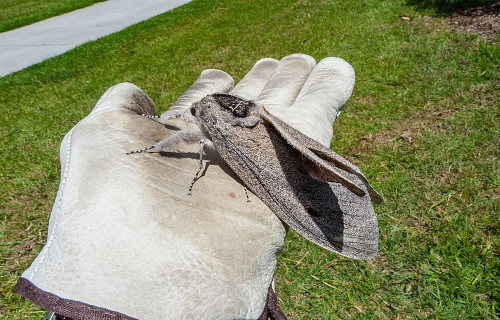
Giant Wood Moth Facts
- Closing out this compendium of 4 Intriguing New Zealand Insects comes the marvel of evolution named the Giant Wood Moth.
- This dazzling giant example of Lepidoptera most frequently goes by the perfectly apt common name for obvious reasons. For the moment, though, this magnificent creation of the efforts of Nature and evolution has no other accepted common name.
- Scientific professionals, however, typically refer to this marvelous invertebrate by its formal scientific name. That, though, represents a bit more of a challenge to pronounce. That’s because the scientific name for the creature is that of Endoxyla cinereus.
- The Prussian-born entomologist, Johann Gottlieb Otto Tepper made the first known recognition of it as a separate and distinct species. This scientifically noteworthy accomplishment further occurred in 1890. At that time, though, he name it differently.
- Regardless of which term one employs when referring to it, though, it represents an awesome sight to behold. That holds true due to its sheer mass. While the Giant Atlas Moth is the largest moth in wingspan, this insect remains the heaviest of its kind.
- Humans rarely see the Giant Wood Moth, but evidence indicates it has a sufficient and stable population base. This also seems to hold true throughout the entirety of its native range. The IUCN, therefore, presently has no listing for it on its Red List.
- The insect nevertheless must be considered to be facing several threats to its existence. Habitat loss due to human expansion remains a threat to it. Its greatest danger, though, perhaps comes in the form of ongoing climate change, like numerous other species.
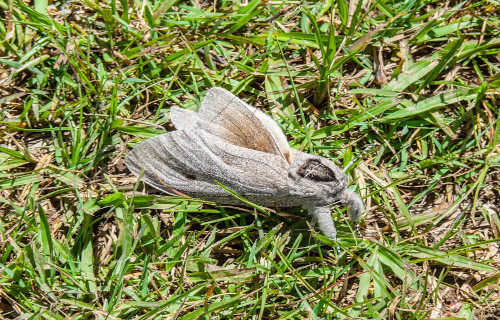
Giant Wood Moth Physical Description
The very name of the Giant Wood Moth gives a good indication of its most noteworthy physical characteristic. That notable trait, however, only applies to roughly half the population. That’s because this species exhibits a strong degree of seuxal dimorphism.
More specifically, the females attain roughly twice the size of their male counterparts. The larger females reach an impressive average wingspan measuring approximately 9.06 in (23 cm). The wingspan of the males averages barely half of that, in most specimens.
Likewise, the sheer mass of the females also averages roughly twice that of the smaller males of the species. Some females, in point of fact, attain a measured mass of as much as 1.06 oz (30 g)! Although that may not sound like much to many people, for a moth it’s huge.
Otherwise, however, the two genders remain virtually identical in outward appearance. Both sexes display the same overall pattern of coloring. The forweings typically show a light or dark gray. The hindwings, meanwhile, usually display a light or medium brown.
The body of the Giant Wood Moth, however, presents a striking visual pattern. This typically displays a dark brown background, with thin, light brown stripes appearing across the body horizontally. The rear tip of the body, though, also generally presents as light brown.
- Kingdom: Animalia
- Phylum: Arthropoda
- Class: Insecta
- Order: Lepidoptera
- Family: Cossidae
- Genus: Endoxyla
- Species: E. cinereus

Giant Wood Moth Distribution, Habitat, and Ecology
The fabuous Giant Wood Moth evolved as native to a very limited region of the world. For the moment, furthermore, no evidence exists that it ever appeared anywhere else. The region of the world where it appears, however, will likely come as no surprise.
That’s due to the fact that this arthropod evolved as mainly endemic to the continent of Australia. Even there, though, the wondrous invertebrate only inhabits a few dozen, widely scattered areas of the vast continent, including Queensland, and New South Wales.
A small population, however, also appears on the island of New Zealand. In each of the lamentably few areas in which it appears, though, it displays decided preferences for its choice of habitat type. It only appears in regions containing quantities of eucalyptus trees.
The vast majority of individuals, in fact, spend their entire lives on and around individual trees! These trees serve as home to the larvae, after the eggs laid on the trees hatch. Once these have done so, the larvae quickly bore into the bark of the host tree.
There, furthermore, the larvae spend up to an entire year burrowing tunnels through the bark, feeding. These tunnels tend to enlarge as they progress, as the larvae do. Once they reach the caterpillar stage, they emerge, and lower themselves to the ground.
There, the caterpillar form of the Giant Wood Moth feeds on the roots of nearby plants. Once they attain adulthood, however, they only live a few more days. Indivduals also do not feed once they reach adulthood. Matue females lay their eggs, and die soon after.

4 Intriguing New Zealand Insects
We hope that each of you enjoyed reading, and hopefully learning from, this article we’ve written about these 4 Intriguing New Zealand Insects. It’s also our hope that doing so has left you with either a new or renewed appreciation for such wonders of Nature.
Unfortunately, however, many of their kindred around the world now find themselves facing strong threats to their continued existence as a species. Many of those dangers, in fact, stem from the actions of mankind. We must do all we can to protect and preserve them all.
Checkout our other articles on 5 Terrific United States Trees, Spectacular Dolphins Throughout Our World, 4 Gorgeous European Gorges, Breathtaking Asian Species
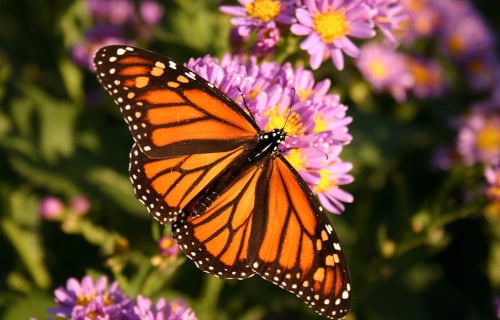
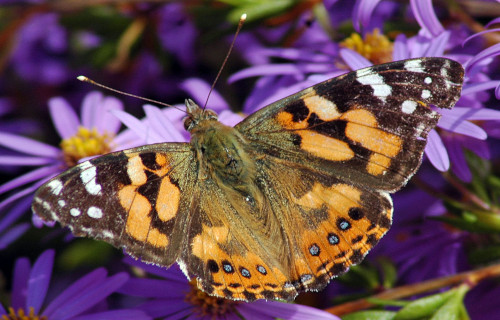
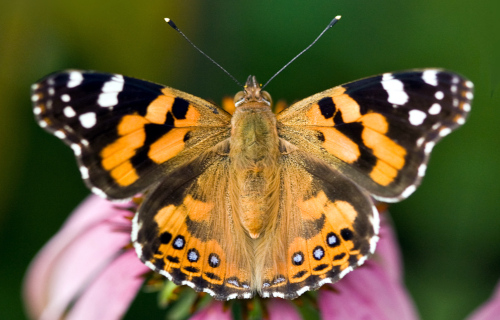
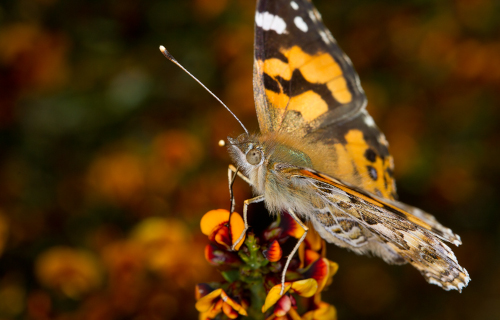
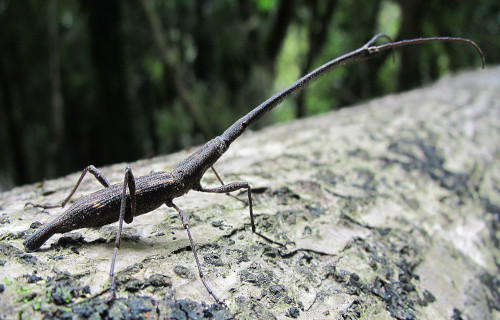
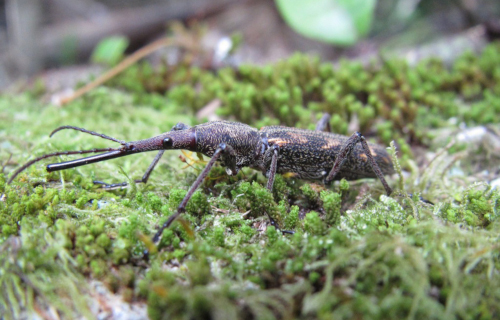









Leave a Reply